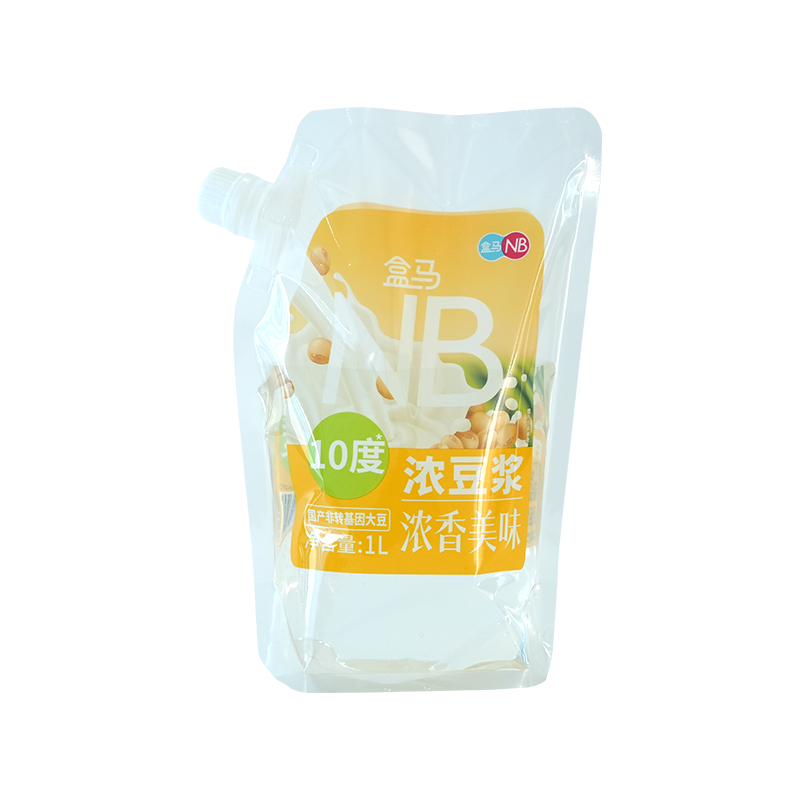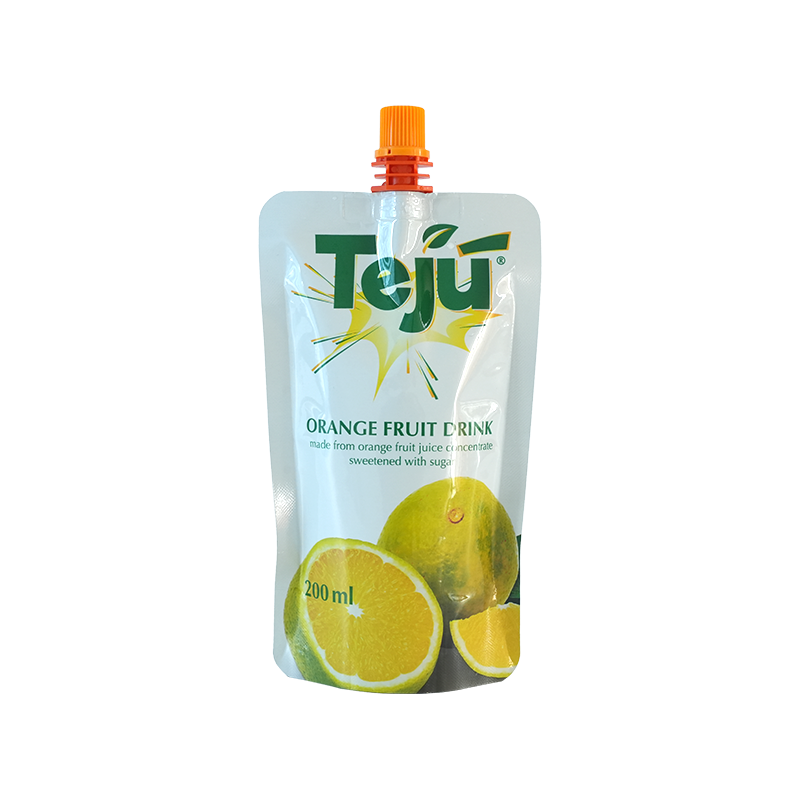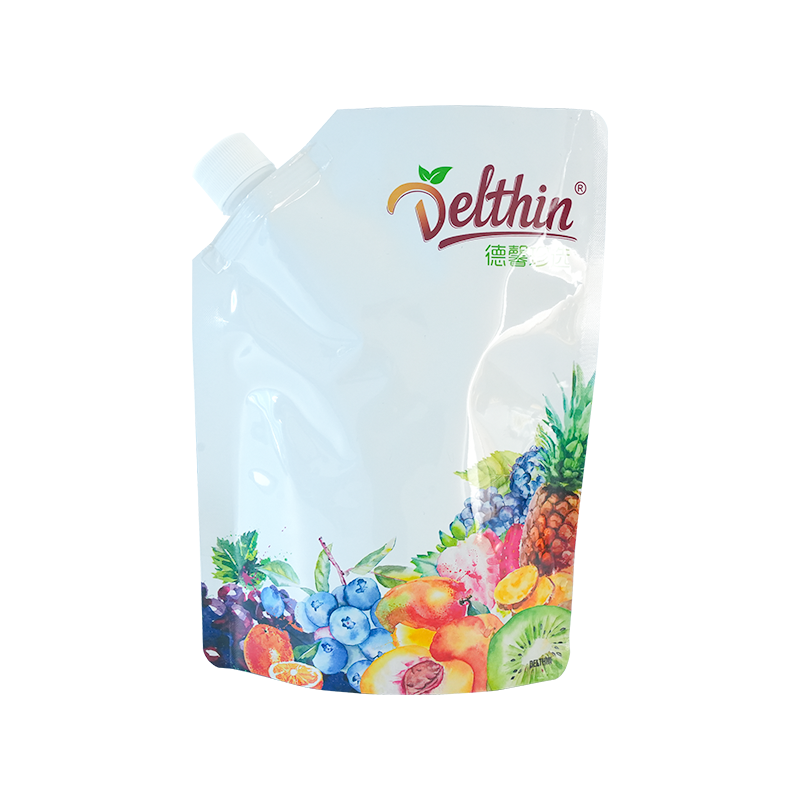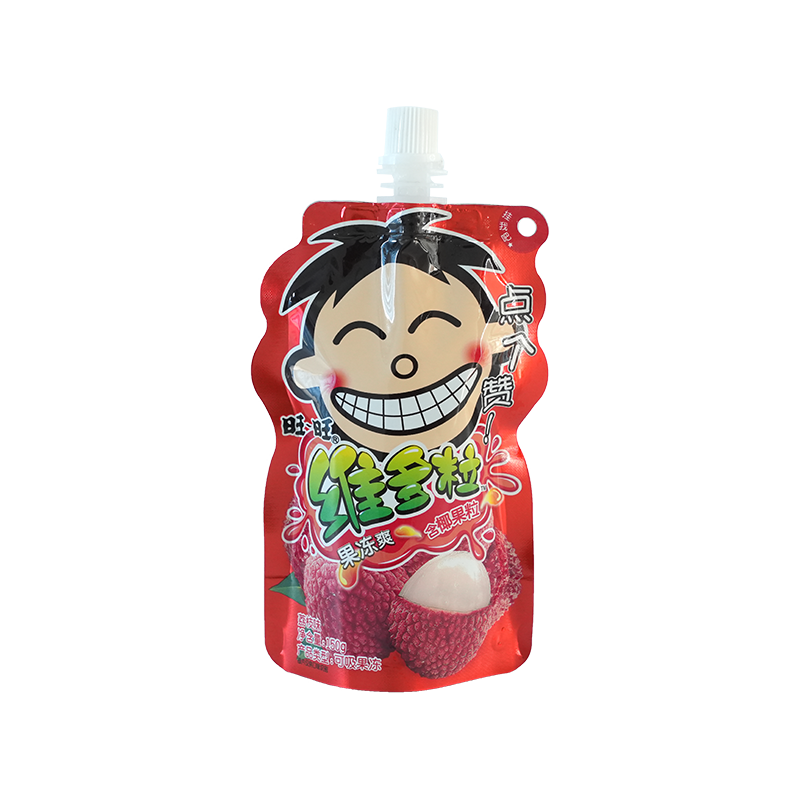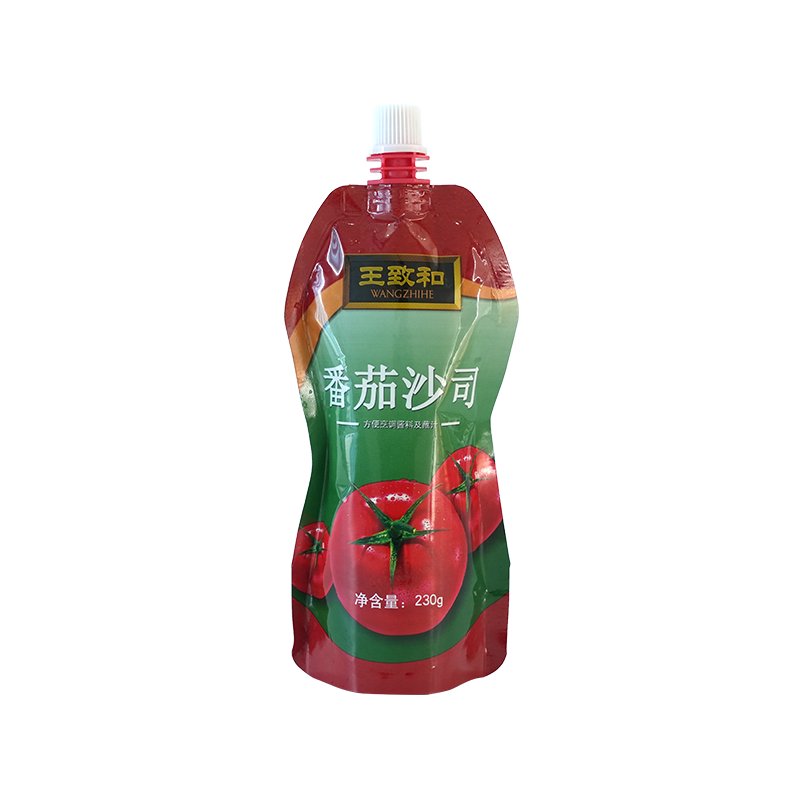In the dynamic world of flexible packaging, selecting the right pouch is a critical decision that impacts everything from product protection and shelf presence to supply chain efficiency and cost-effectiveness. Among the myriad of options available, the eight side seal flat bottom bag has emerged as a premium and highly functional choice for a wide range of products. But with other common styles like stand-up pouches, three-side seal bags, and pillow bags on the market, it can be challenging to discern the unique value proposition of this particular design.
Understanding the Basic Anatomy of Pouch Styles
To appreciate the distinctions, one must first understand the fundamental construction of common pouch styles. The terminology often refers to the number of seals and the structure of the bag, which directly dictates its performance and appearance.
A standard pillow pouch is one of the simplest forms, created by folding a single sheet of film and sealing it along the back and both ends, resulting in a tubular, pillow-like shape when filled. It is a cost-effective solution for many vffs (Vertical Form Fill Seal) applications. A three-side seal bag, as the name implies, is a flat pouch made from two webs of film sealed along three sides: the two sides and the bottom. It lies flat and is often used for products that do not require free-standing capability.
The stand-up pouch, a broader category, includes any pouch designed to stand upright on a shelf without external support. This characteristic is typically achieved through a gusset—a fold or tuck in the material—at the bottom. The most common type is the doypack, which features a side gusset. Finally, the eight side seal flat bottom bag represents a more complex construction. It is formed from a single sheet of film that is folded and sealed with a total of eight separate seals. This includes the two side seals, the top and bottom seals, and four additional angled seals that create the structured, flat bottom and the bag’s distinctive, prism-like shape when filled. This intricate process often requires specialized horizontal form fill seal (hffs) machinery or advanced converting techniques.
Structural Distinctions: The Foundation of Performance
The most significant differences between pouch styles lie in their physical structure, which is the primary driver of their functional benefits.
The Engineered Bottom: Flat Bottom vs. Gusseted Bottom
The bottom construction is the most critical differentiator. In a standard stand-up pouch with a side gusset, the bottom is formed by the gusset folding outwards. While functional, this can sometimes create a slightly rounded or less stable base, especially with heavier products. The bottom of the bag is not a single, solid panel but is created by the intersection of the front, back, and gusset panels.
In contrast, the eight side seal flat bottom bag is defined by its rigid, flat bottom. This is achieved through a specific manufacturing process where the bottom is sealed into a flat, rectangular panel. This design offers superior stability and load-bearing capacity. The flat bottom distributes the weight of the product evenly, preventing the bag from tipping over easily. This makes it an excellent choice for heavy-duty products like pet food, bird seed, coffee beans, or granular chemicals. The flat bottom also provides a perfect canvas for bottom printing, allowing for barcodes, nutritional information, or promotional messages to be placed in a highly visible location when the bag is standing on a shelf.
The Seal Configuration: Eight Seals vs. Fewer
The number of seals directly impacts the bag’s integrity and shape. A three-side seal bag has, by definition, three linear seals. A pillow pouch has a back seal and two end seals. A standard stand-up pouch typically has a top seal, a bottom seal, and two side seals.
The eight side seal flat bottom bag is unique in its complexity. The eight seals create a three-dimensional, rectangular structure that is more akin to a box than a traditional bag. This “boxy” shape is not just for aesthetics; it provides structural rigidity that other pouches lack. The multiple seals reinforce the bag’s corners and panels, making it more resistant to impact and stress during transportation and handling. This complex structure also allows for a larger, more uniform surface area on all sides, which is a significant advantage for branding and product information.
Table: Structural Comparison of Common Pouch Styles
| Feature | Pillow Pouch | Three-Side Seal Pouch | Standard Stand-up Pouch (Doypack) | Eight Side Seal Flat Bottom Bag |
|---|---|---|---|---|
| Number of Seals | 3 (Back + 2 Ends) | 3 (2 Sides + Bottom) | 4 (Top, Bottom, 2 Sides) + Gusset | 8 |
| Bottom Structure | Rounded | Flat (lies down) | Gusseted | Rigid, Flat |
| Shelf Stability | Low (cannot stand) | Low (cannot stand) | Good | Excellent |
| Structural Rigidity | Low | Low | Moderate | High |
| Primary Shape When Filled | Tubular | Flat, 2-Dimensional | Cylindrical with a rounded base | Rectangular, “Boxy” |
Functional Advantages in Practical Applications
The structural differences translate directly into tangible functional benefits across the supply chain, from the packaging line to the end-user’s home.
Shelf Presence and Brand Impact
In a crowded retail environment, visibility is currency. The eight side seal flat bottom bag offers unparalleled shelf impact. Its rectangular, box-like shape stands upright with authority and provides large, flat, uninterrupted panels on all sides. This creates a premium billboard effect, maximizing the space for high-quality graphics, logos, and product imagery. Unlike a rounded pouch where graphics can warp or distort, the flat panels of an eight-side seal bag ensure that branding is displayed exactly as intended by the designer. This makes it a top choice for premium product packaging where brand perception is paramount. The ability to utilize the bottom panel for printing further enhances its marketing potential.
Stability and Load-Bearing Capacity
For heavier products, stability is non-negotiable. The wide, flat bottom of the eight side seal flat bottom bag provides a footprint that is significantly more stable than that of a gusseted stand-up pouch. This reduces the risk of toppling on the shelf or in the consumer’s pantry. Furthermore, the reinforced structure and distributed weight allow it to handle a greater volume and weight of product without the seams straining. This robustness is a key reason why this style is frequently specified for bulk food packaging and industrial products. The bag’s ability to stand securely also simplifies the filling process on automated lines, as it does not require additional support or intricate handling to maintain its form.
Storage Efficiency and Space Utilization
The rectangular prism shape of a filled eight side seal flat bottom bag is inherently more efficient for storage and shipping than the cylindrical shape of a standard stand-up pouch. When packed in a case or displayed on a shelf, these rectangular bags can be placed side-by-side and stacked on top of one another with minimal wasted space. This cubic efficiency optimizes palletization, reduces shipping costs, and creates a neat, organized appearance in a retail setting. For the end-user, this shape also often translates to more efficient storage in kitchen cabinets or pantries, as it does not roll away and can be packed tightly against other similarly shaped items.
User Experience and Convenience Features
Modern packaging must cater to consumer demand for convenience. The eight side seal flat bottom bag is fully compatible with a wide range of reclosable features. Zipper closures can be easily integrated into the top seal, allowing consumers to open and close the bag repeatedly to maintain product freshness. For liquid or powder products, such as motor oil, detergents, or nutritional supplements, a spout fitment can be added. The rigid structure of the bag makes it easier to grip and pour from without collapsing, a significant improvement over less structured pouches. The flat bottom ensures the bag remains stable during the pouring process, preventing spills and enhancing the overall user experience. This combination of stability and easy dispensing is a major factor in its growth within the liquid packaging sector.
Material Considerations and Barrier Properties
While the structure is a defining feature, the material composition is equally important for product protection. All flexible pouches, including the eight side seal flat bottom bag, can be constructed from a variety of laminated films tailored to specific needs.
The choice of material is driven by the product’s requirements. For products sensitive to oxygen and moisture, such as coffee or snacks, high-barrier films incorporating layers like aluminum foil, metallized pet, or evoh (ethylene vinyl alcohol) can be used to create an effective barrier against gases and vapors, extending product shelf life. For products requiring visual appeal, clear bopp (biaxially oriented polypropylene) or polyester films with high-quality graphics can be used. The manufacturing process for an eight-side seal bag is compatible with these sophisticated laminates, ensuring that the superior structure does not come at the cost of protective properties. In fact, the multiple, robust seals can contribute to overall package integrity, potentially reducing the risk of seal failure compared to simpler pouch designs.
Economic and Operational Factors for Wholesalers and Buyers
From a sourcing perspective, several economic and operational factors must be considered when evaluating the eight side seal flat bottom bag against other options.
Cost Implications
It is a recognized fact in the packaging industry that the eight side seal flat bottom bag is generally more expensive to produce than a pillow pouch or a basic three-side seal bag. The complexity of its construction requires more material and more sophisticated, often slower, manufacturing machinery. This results in a higher cost per unit. Therefore, it may not be the most cost-effective solution for low-margin, high-volume commodity products where packaging is purely functional. However, for premium products, the cost is often justified by the enhanced brand perception, superior functionality, and potential for a higher price point. The value is not in the bag itself, but in what it enables: a premium unboxing experience, better product protection, and increased sales conversion on the shelf.
Sourcing and Lead Times
Producing an eight side seal flat bottom bag requires specialized equipment and expertise. Not all packaging converters have the capability to manufacture this style efficiently. When sourcing this packaging, it is crucial to partner with a supplier that has a proven track record and the appropriate horizontal form fill seal or advanced converting technology. Due to the more complex production process, lead times for these bags may be longer than for simpler pouch styles. Planning and communication with the supplier are essential to ensure a smooth supply chain. Buyers should inquire about a supplier’s minimum order quantities (MOQs) as they might be higher for complex custom bags compared to standard options.
Conclusion: Selecting the Right Pouch for Your Product
The eight side seal flat bottom bag occupies a distinct and valuable position in the flexible packaging landscape. It is not a one-size-fits-all solution, but rather a specialized tool designed for specific applications where its unique properties deliver significant advantages.
To summarize, choose an eight side seal flat bottom bag when your product requires:
- Exceptional shelf stability for heavy or dense items.
- A premium, high-impact brand presence with maximum graphic visibility.
- A rigid, box-like structure that aids in stacking, storage, and pouring.
- Superior load-bearing capacity and durability throughout the distribution cycle.
Conversely, simpler pouch styles like pillow bags or three-side seal bags may be sufficient for lightweight, non-fragile products where cost is the primary driver and shelf-standing is not required. Standard stand-up pouches with side gussets offer a good balance of cost, functionality, and market acceptance for a vast range of consumer goods.
Ultimately, the decision hinges on a careful analysis of your product’s physical characteristics, your brand’s positioning, your target audience’s expectations, and your operational and budgetary constraints. By understanding the fundamental structural and functional differences outlined in this article, wholesalers and buyers can engage in more informed discussions with packaging suppliers and make a strategic choice that truly packages their product for success. The eight side seal flat bottom bag is a powerful option for those who view their packaging not just as a container, but as an integral component of their product’s value proposition.

